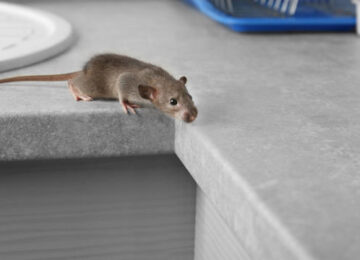Water damage in your home can cause a lot of anxiety and overwhelm. Whether it’s a leak, torrential downpour, or a malfunctioning gadget, it’s vital to act decisively to minimize the harm. A step-by-step guide will help you handle water damage effectively.
In this post, you will find out all you need to know about dealing with water damage in your home.
How To Deal With Water Damage?
Here is how to deal with water damage properly:
Turn Off The Electricity
The combination of water and electricity can be dangerous. To avoid electrical shock, turn off the power to the affected areas.
Evaluate The Structural Integrity
Make sure the structure of your home is safe if you have significant water damage. The signs of severe damage are sagging ceilings or buckling walls. If the structure seems to be compromised, leave the house and call a professional.
Identify The Origin
You should know where the water is coming from. A burst pipe, leaking roof or overflowing appliance could be the cause. Contact a reputable plumber or water damage expert if you can’t pinpoint the source.
Turn Off The Water Supply
After locating the source, shut off the water supply to prevent further damage. A plumber can help you locate the main shutoff valve.
Remove Standing Water
Standing water can be removed with a wet/dry vacuum. They are designed to handle large volumes of water. You can get one from a hardware store if you don’t already have one.
Use Buckets And Towels To Clean Up
If the water level is low, use buckets to scoop out water and towels to soak up the rest. Be thorough to prevent mold growth.
Ventilate The Area
Open windows and doors to improve air circulation. Use fans to help speed up the drying process. If you have dehumidifiers, place them in the affected areas to remove moisture from the air.
Clean Carpets Regularly
For carpets and upholstery, professional cleaning is recommended to ensure they are thoroughly disinfected and dried. It is possible to replace them if they are heavily soaked.
Prevent Mold From Growing
Use products that prevent mold from growing. All affected areas should be covered with mold-preventive products. Acting quickly is crucial because mold can start growing within 24-48 hours, so acting quickly is crucial.
Check For Mold
Observe the affected areas for a while. Use mold removal products or seek professional help if you notice any mold growth.
Repair And Rebuild
Check out the damage after everything dries out. Look out for sagging floors, stained walls, and other indications of deteriorating structures.
Starting The Repairs
Fix drywall, replace insulation, and repair flooring are some of the necessary repairs. Major repairs may require the assistance of experts.
Paint or refinishing:
Restore your home’s appearance by painting and refinishing the affected areas after repairs.
Take pictures of the damage:
Take pictures and videos of the damage before you tackle the cleanup. This will be important for your insurance claim.
Conclusion
Water damage can be challenging to deal with, but with the right steps, you can minimize the impact on your home. Don’t hesitate to seek professional help when needed, and act quickly. In some cases, you might even need to do bigger repairs and replacements including home siding replacement, residential roof replacement, and fencing replacement if it’s made of wood.
You can reduce the risk of future water damage by taking preventive measures. Stay vigilant and keep your home safe and dry!










